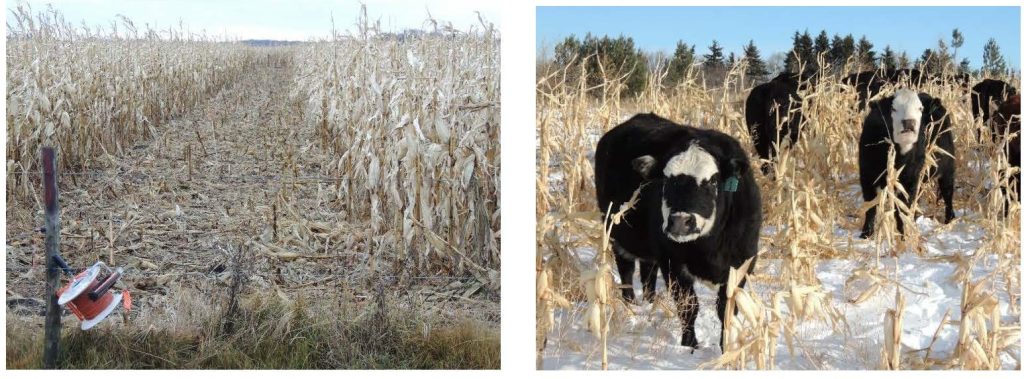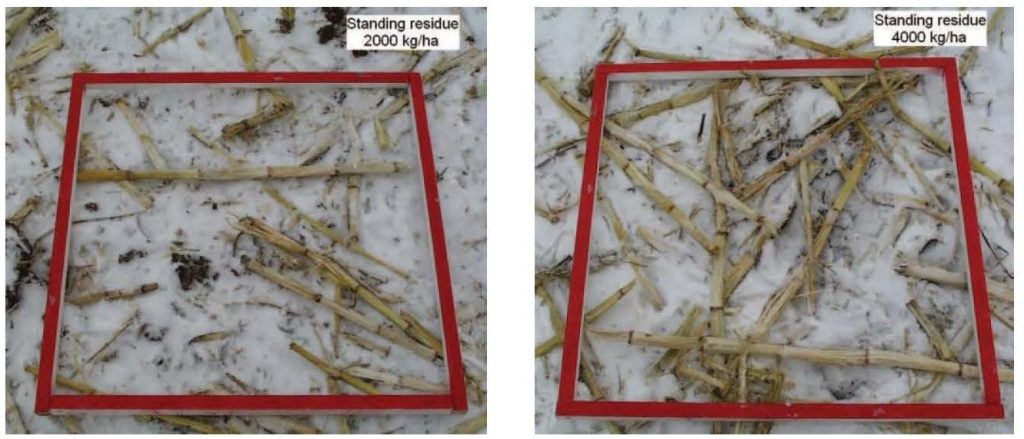It’s best to harvest your corn crop when the plant moisture is between 65 and 70% to ensure proper fermentation and minimize spoilage. Its highest digestible energy for cattle is when the corn is harvested close to maturity. But how to you determine that?
Harvest Timing Methods #
The most accurate method to determine silage harvest timing is by first determining the dry matter of the whole corn plant, however, the most commonly used method is determining the kernel milk line.
Dry matter measurement: Measuring can be completed by taking plant samples that are representative of the average crop stage, chopping those finely, then using a moisture tester to determine the percentage of dry matter. Most growers test moisture by measuring out 100 grams of silage and microwave it several times until weight stabilizes and then record the new weight. From there the remaining weight is the dry weight and the difference is the % of moisture.
Milk line assessment: The milk line is where the solid and liquid of the kernel meet and is seen when the corn reaches the dent stage. When making assessments, break a cob in half, then look for a white line that starts at the tip of the kernel and moves towards the base as the cob matures. For silage timing, the milk line should be ¾ down the kernel showing that grain fill is complete and the kernel is full of starch. However, vast differences in plant moisture have been observed using this method due to hybrid differences and environmental influences.
Visual indicators such as plant colour changes, kernel appearance, and husk drying all help provide the early signs that plant maturity is nearing.
Harvest Tips #
Silage corn does provide growers with the flexibility to harvest grain, silage it, or leave it standing. If going the silage route, just like other crops, it is best if the corn can reach maturity prior to a fall frost to help protect feed quality. If moisture levels are above 70%, this can cause seepage and allow for bacteria to form, giving it a foul smell and poorer feed quality. If it becomes too dry, it can cause difficulties in packing it, creating a poor fermentation environment and eventual losses in feed quality. Ensiling at the correct whole plant moisture and crop maturity is a must to achieve high quality feed.
The silage corn cutting height should be set for four to six inches to minimize yield reductions. This also leaves behind smaller amounts of residue to be easier to handle in the next crop’s soil preparation.
Leaving It Standing #
Grazing corn is best utilized for your herd when the ground is frozen to minimize plant waste. Cattle can access corn through the snow very well. Use electric fence to split up the corn field and limit cow access to a maximum four days grazing per paddock.

Source: manitoba.ca/agriculture
It’s recommended that farmers do a whole plant feed analysis to determine which supplements they should provide along with the grazing corn. To maximize utilization, cattle should only be provided access to a few days of feed at a time to ensure they consume the entire plant.

Source: manitoba.ca/agriculture
Efficient corn grazing utilization is when less than 810 kg/ac or 2,000 kg/ha of residue remains post-grazing.




